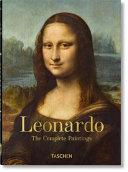Arts , Art History & Theory
Cubism
Pioneered by Picasso and Braque, Cubism has been described as the first avant-garde art movement of the 20th century. With inspiration from African and Native American art and sculpture, its practitioners deconstructed European conventions of viewpoint, form, perspective to create flattened, fragmented, and revolutionary images. Picasso's celebrated painting Les Demoiselles d'Avignon is typically regarded as the original cubist work, with its radical fracturing of objects and figures into distinct areas, corresponding to multiple different viewpoints. Cubism thereafter developed two distinct trends: Analytical Cubism, which continued to interweave perspectival planes in muted blacks, greys and ochre, and later Synthetic Cubism, characterised by simpler shapes, brighter colors, and collage elements such as newspaper. This book presents the prime protagonists of Cubism, with work from artists including Pablo Picasso, Georges Braque, Fernand Leger, Juan Gris, Albert Gleizes, and Robert Delaunay. About the series Born back in 1985, the Basic Art Series has evolved into the best-selling art book collection ever published. Each book in TASCHEN's Basic Art History series features: approximately 100 color illustrations with explanatory captions a detailed, illustrated introduction a selection of the most important works of the epoch, each presented on a two-page spread with a full-page image and accompanying interpretation, as well as a portrait and brief biography of the artist
- Gantefuhrer-Trier, Anne
- TASCHEN Gmbh
- 2020
- 96
- Hardback
- 9783836505390
Поткатегории












